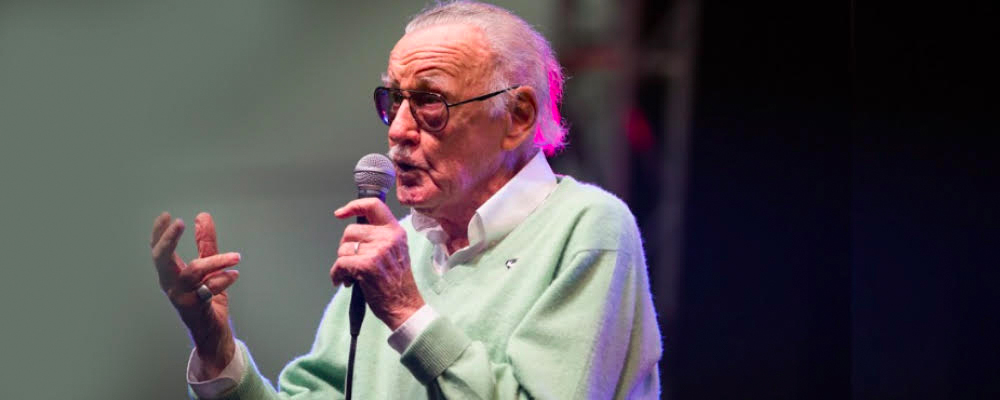Stan Lee Impacted Millions With His Wondrous Stories and Versatile Imagination
Alci Rengifo
Stan Lee, the creator of some of the most enduring comic book personas of all time has left us at the age of 95. There is not a corner of contemporary popular culture left untouched by Stan Lee. It is no exaggeration to say that Lee’s influence towers over that of major 20th century literary figures. He never took home a Nobel Prize, but Lee’s work has embedded itself in the public imagination in ways Gabriel Garcia Marquez and Stephen King could only dream of. Creations like Spider-Man, Daredevil, X-Men, Captain America, Iron Man and the Hulk span across genres and mediums, capturing fans both in print and on the big screen. For many readers it is these characters Lee fashioned at Marvel Comics who open the door towards a lifetime of drama, reading and the arts. Even more than films and high end literature, Lee was ahead of the times, promoting tolerance and equality through his fantastical visions.
Lee was born Stanley Martin Lieber in 1922, in an Upper West Side Manhattan long gone into the ashes of history. Forever marked by the struggles of the Great Depression, Lee’s working class roots never left him. He always carried an iron work ethic which later helped fuel his impressive output. At 17 he was hired to write superhero comics for a publishing company owned by a relative. Then by sheer chance, Lee found himself becoming editor-in-chief at 19. By the 1960s, as the old comic book formats that were in vogue through World War II lost their original fan base, Lee and fellow comics creator Jack Kirby came up with a new kind of superhero group, the Fantastic Four. Written as a team of scientists transformed into superheroes by cosmic rays during a space mission, Lee felt that while these characters would feature fantastical powers, deep down they would be achingly, tragically human. It was the first big, modern publishing hit for Marvel Comics, and the rest, as they say, is history.
For the next 50 years, the other Marvel titles, characters and storylines created by Lee and his team of writers, illustrators and editors would impact generations of readers worldwide. Always seeming jovial and open, Lee was a writing machine who produced character after character, weaving it all into a complex universe in which one comic title could flow into another. His brilliantly creative mind would find inspiration anywhere. Nordic myth would inspire Thor, mysticism would bring about Doctor Strange, and the social struggles of the 1960s would form the subtext of titles like X-Men and Black Panther, where heroes find themselves alienated by their natural identities, fighting against both super villains and discrimination.
For Lee in those early days it was always just simply his job. Other people go to construction sites, make deliveries, or crunch numbers, Lee’s job was to write stories. He once compared the way he worked to a guitarist who can sing and play at the same time. It was a natural outgrowth of talent and practice. But the powerful value of what Lee did at Marvel was that he created a fantasy world that speaks so deeply and urgently to a young imagination, and stays with you long into adulthood. His characters are timeless because their struggles and feelings are universal. Spider-Man’s sense of being a nerd and outsider, blessed with great powers but feeling the weight of great responsibility, Professor Xavier attempting to preach tolerance between humans and mutants, while Magneto calls for violent upheaval. These comic book characters all embody real world dilemmas and social struggles. Who doesn’t feel like the Hulk when they lose their temper? Lee was able to tap into human experiences through his comics the way a great novelist like Marcel Proust or Salman Rushdie can evoke pain, loss and love.
Perhaps Lee’s mutants, wizards and cosmic villains felt so real because he himself was a keen observer of things that were wrong in the system. In 1968 he wrote a column where he stated that racism and bigotry were “among the deadliest social ills plaguing the world today.” Lee would go on to say, “But, unlike a team of costumed super-villains, they can’t be halted with a punch in the snoot, or a zap from a ray gun. The only way to destroy them is to expose them — to reveal them for the insidious evils they really are. The bigot is an unreasoning hater — one who hates blindly, fanatically, indiscriminately.” Such words are sadly, still very much needed in our current environment were intolerance and passionate hatreds continue to rear their heads.
Recently Stan Lee became more of a pop culture icon because of the cinematic legacy of Marvel. What began as comic book yarns are now the stories of a multi-billion dollar film universe that now includes streaming shows and other media. Lee made 35 Marvel movie cameos, not counting previous appearances on Marvel-based cartoons and TV shows. Multiple times Lee would be crushed by some catastrophe wrought by one of his villains, or he would appear in fun little roles a bar tender, general or truck driver. It was a fitting way to leave a lasting imprint, especially since younger fans are being introduced to his characters precisely through the cinema.
Whether on paper or on screen, to discover the world of Stan Lee is to enter an imagination where good and evil clash, but complex lives are lived, touched or haunted by incredible powers and epic experiences. Pop culture has turned Stan Lee into an icon, but what is special and enduring about the man is that he was above all else, one of our great storytellers.
Stan Lee died on Nov. 12 in Los Angeles, CA.

